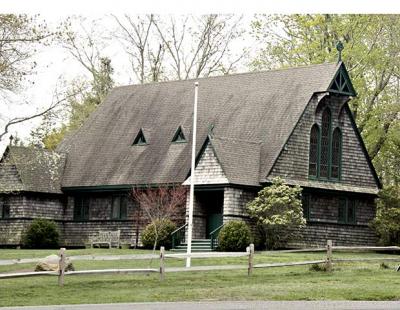Gansett Summer Chapel Overhaul

Bishop Lawrence C. Provenzano of the Episcopal Diocese of Long Island is planning to create a year-round ministry serving the South Fork’s Latino community at St. Thomas Chapel, the historic church at the corner of Montauk Highway and Indian Wells Highway in Amagansett.
The diocese owns the church, which is presently used only in the summer, and a three-bedroom rectory on the property. Plans, according to a brochure issued by the diocese, call for the hiring of a missioner who will live in the rectory and use the church as a base of operations from which to build a community of parishioners living between Montauk and Southampton. The church will also be winterized and expanded by constructing a foundation that will make room for two bathrooms and a kitchen (the chapel presently has no plumbing) as well as a community room.
Attendance at the church is low. At Monday’s meeting of the Amagansett Citizens Advisory Committee, the Rev. Denis Brunelle, vicar of St. Thomas and rector of St. Luke’s Episcopal Church in East Hampton, said that the average number of worshipers over the last decade was 19. Meanwhile, Bishop Provenzano had asked the clergy on the North and South Forks whom they are ministering to. “The 10 Episcopal parishes said, ‘We’re not addressing the Hispanic community, yet their numbers are rising more and more,’ ” Father Brunelle told the committee.
“I don’t anticipate we’re going to see any large congregation here,” he said, given his belief that most Latinos in the area are Roman Catholic. “We’re not going to be looking at 700 people at St. Thomas on any given weekend. We would be happy if there were 50.” Given the work schedules of many Latino residents, he said, services would not necessarily be held on Sunday mornings, or even on weekends.
Tina Piette, of the committee, offered encouragement. “I fully support it. I think it should be used,” she said of the church.
Hers was a minority opinion, however. The plan drew sharp questions and concerns from other members, and the discussion rekindled familiar complaints about traffic, overcrowding, and a shortage of parking accommodations, with some members suggesting alternative sites outside of the hamlet.
“We don’t have parking to absorb any additional traffic,” Kieran Brew, the committee’s chairman, said. “Every year it gets more crowded. More people using more facilities. . . . How much moreintensity can that space absorb, and how much more can we as a hamlet absorb?” In five years, he predicted, “it’s only going to be more crowded.”
Most committee members who spoke were similarly skeptical of the plan to raise the church and dig a foundation. The exterior would not change, Mr. Brunelle said. The project would not commence before 2016 at the earliest.
But the church’s location is already a particularly hazardous one, said Mr. Brew, who noted that there is no traffic light, crosswalk, or sidewalk there. Across Indian Wells Highway, vehicles enter and exit the Mobil service station from three points, he continued, and vehicles speeding to and from Indian Wells Beach in the summer add to the danger. Committee members also voiced the fear that the chapel’s lawn would be eliminated to accommodate parking.
“You’re bringing to the table things that should be discussed,” Ms. Piette told Mr. Brunelle. “You are bringing to the forefront the parking issue, future planning issues for this community. So thank you for coming and answering questions. I’m sure we’re going to see you again,” she said, once a site plan review has been conducted and all stakeholders have weighed in.
“If it gets to that point before I retire,” Mr. Brunelle answered. “I’ve got eight years left.”
The committee remained skeptical when the discussion turned to a prospective plan to remove the garbage receptacles at Indian Wells Beach and institute a carry-in, carry-out policy on a trial basis. As she had at the East Hampton Town Trustees’ meeting on March 25, Rona Klopman told her colleagues that the town’s litter and recycling committee, on which she also serves, had presented the plan to the town board, which considered it on Tuesday.
“I don’t think it’s going to work,” said Michael Diesenhaus, the committee’s vice chairman. “It’s a very short time before the season, and changing people’s behavior takes a lot of time, a lot of work.”
If the policy is ineffective, Mr. Brew said, “we’re looking at a disaster.”
Betty Mazur, on the other hand, was supportive. “Anybody that camps in parks is familiar with the concept of carry-in, carry-out,” she said. “I don’t see why we’re so negative.”
In a show of hands, just three members endorsed implementing the plan for the coming summer season. When John Broderick suggested that the committee be asked to support an experimental implementation of the policy — May and June only — the vote was 6 in favor, 11 against.
